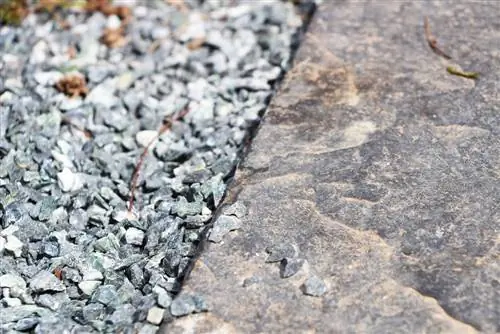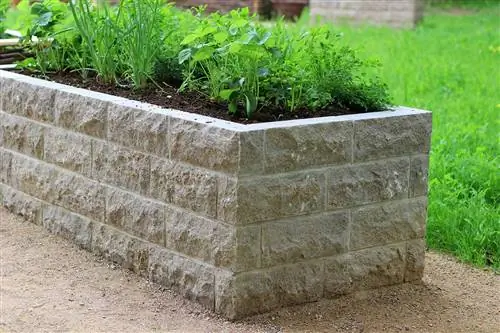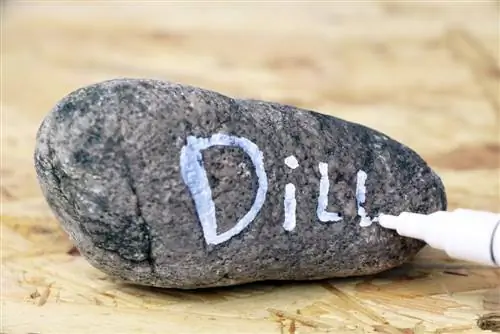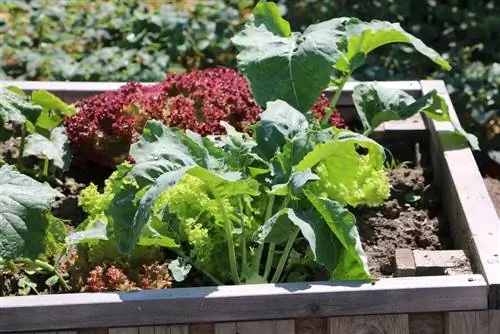- Author admin [email protected].
- Public 2023-12-17 03:39.
- Last modified 2025-06-01 06:48.
The selection of suitable stones for the bed border is one of the supreme disciplines in stylish garden design. In contrast to arranging short-lived plants on the bed, the design of a stone border leaves little room for experimentation. This guide invites you into the multifaceted world of the best types and shapes for a successful stone bed border that integrates harmoniously into your garden.
Natural stone ennobles every bed border
Natural stone undoubtedly lives up to its reputation as a premium solution for tasteful flower bed edging. So that the framed perennials and flowers can assert themselves against the massive presence of natural stones, subtle stone colors are in vogue, such as gray, ivory, terracotta or soft red. We will introduce you to the most popular types of natural stone with their individual advantages as representative bed borders in more detail below:
Sandstone
Sandstone scores with light natural tones that harmonize perfectly with colorful flowering bedding plants. The natural stone is primarily composed of sand grains, which results in a large-pored surface and a natural look. The comparatively soft structure makes processing easier, so sandstone is recommended as a building stone for a dry stone wall as a bed border.
Advantages
- cheap
- easy editing
- good resistance to breakage
- numerous shades
Disadvantages
- conditional frost protection
- needs impregnation
- comparatively high abrasion
Travertine
Travertine is classified as a soft sedimentary rock, so the natural stone is very easy to work with. Its color spectrum extends from subtle yellow and brown tones to bright red and simple white and black. At first glance, travertine looks very similar to high-quality marble. The pronounced versatility makes travertine one of the most sought-after natural stones for the imaginative framing of flower and vegetable beds.
Advantages
- cost-effective
- easy to edit
- frostproof
- weather-resistant
- easy care
Disadvantages
- acid sensitive
- fading color
- susceptible to algae deposits
Tip:
The striking similarity between travertine and marble means there is a high risk of confusion. The trade name antique marble does not mean real marble. In fact, it is simple travertine stone that has undergone a special surface treatment.
Granite
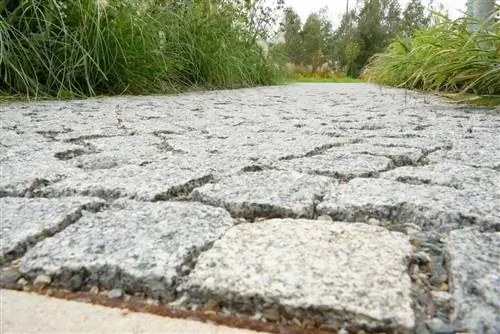
With granite you are choosing the hardest natural stone and creating a bed border that will last forever. As an igneous rock, granite leaves nothing to be desired when it comes to the variety of colors and processing properties. In the form of curbs or ledges, the noble hard stone decoratively demarcates low beds and discreetly bridges smaller height offsets within the bed area. With inimitable elegance, the valuable natural stone forms a palisade and frames a raised vegetable or flower bed. In this version, even larger differences in terrain are perfectly compensated for.
Advantages
- unmatched hardness
- heat-resistant
- color stable
- completely frost-proof
- breakproof
- scratchproof
- resistant to moisture
Disadvantages
- costly
- high weight causes high transport costs
- unprocessed quarry stones with sharp edges
Limestone
Limestone is essentially composed of the sediments of microorganisms and is therefore a soft rock. The best-known occurrences in Central Europe are in the French and Swiss Jura as well as in the Alps. Thanks to its yellow-beige color, Jura limestone plays a key role in Mediterranean garden design, not least as an authentic bed border. The modern garden style uses light limestone as a suitable filling for gabions to enclose raised beds. Red and green limestone are becoming increasingly popular when creating dry stone walls as natural bed borders in country houses or cottage gardens.
Advantages
- cheap
- frost-resistant
- easy to edit and install
- excellent strength and color retention
Disadvantages
- conditionally weatherproof
- sensitive to de-icing s alt (danger of stains)
You can't go wrong with a bed border made of natural stone. The diverse types of stone offer creative solutions for modern, Mediterranean, rustic and elegant looks, suitable for every budget.
Concrete stone - modern flair for the garden bed
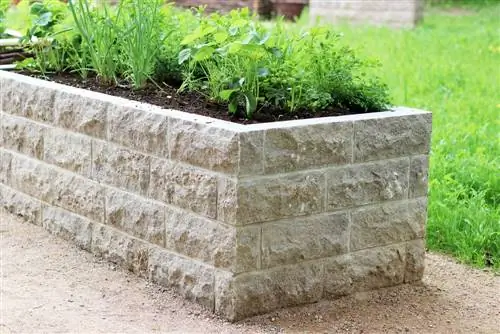
Concrete blocks bring practical aspects to the fore, such as the accurate mowing edge between the lawn and flower bed. Thanks to a variety of shapes and colors, the aesthetic factor is not neglected in the solutions. Furthermore, concrete stones are very popular in modern garden design and are inexpensive to purchase. Home gardeners who lay a stone bed border themselves appreciate the exact dimensions of concrete blocks, because every element fits with centimeter precision. Strictly geometric bed contours, like in the original Japanese garden, are child's play even for the inexperienced hand thanks to concrete stone. We have compiled the most popular options for a creative bed border made of concrete stone for you below:
- Lawn edge stone with rounded top for clear separation of lawn and bed
- Cornerstones to match lawn edging stones for geometric bed edging in the middle of a lawn
- Mowing edge stones in a semi-round shape for curved and round bed borders next to and in the lawn
- Concrete palisade in wood look for a permanent bed border with a natural look
- Earth-colored concrete stones in shingle profile as a decorative frame design for Mediterranean beds
Palisade-shaped concrete blocks are available in countless dimensions, colors and design variations. The best-sellers include slim, round palisades in elegant gray, closely followed by wide, wave-like beveled shapes with a flat surface in subtle anthracite. As a cost-effective alternative to natural stone, concrete bricks are useful for low dry stone walls as a bed border. Modern production methods have succeeded in giving the concrete blocks a natural appearance, as if they came straight from the quarry. Colors such as shell limestone or granite brown make the legitimate deception perfect.
Tip:
Are you struggling with regular water build-up in your perennial and vegetable beds? Then concrete blocks offer an effective and decorative solution to the problem. By edging the waterlogged bed with a hollow stone up to 100 mm deep, excess rainwater is reliably drained away.
Old bricks create a rustic atmosphere
With a bed border made of old or antique-finished bricks, you can turn back time in your garden design. You can purchase used bricks from demolition companies for little money. The demand for old bricks has increased so rapidly that specialist companies have specialized in sales and offer pre-cleaned antique goods in top quality. With a small bed of mortar as a foundation, there are no limits to your imagination when designing the border. Fans of clear structures lay the stones in a rectangular or square shape. Gardeners with a penchant for more variety lay the bricks as standing runners with a slight inclination of 10 to 15 degrees, so that an eye-catching jagged crown is formed.
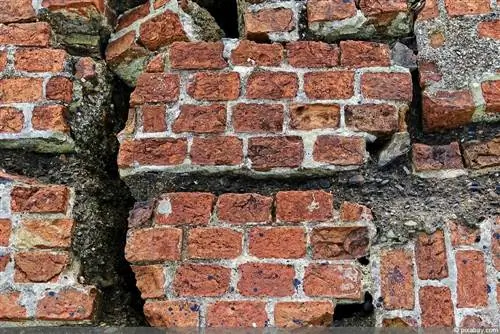
If you interpret bricks as roof tiles, an original variant for a stone bed border opens up. Old plain roof tiles form a stable border for flower and vegetable beds, beyond conventional design options. Placed side by side in a narrow trench with a mortar foundation, you give the discarded roof tiles enough stability to withstand the pressure of the bed soil. At a purchase price of 50 cents per hand-picked piece, the limited durability of the rustic alternative to natural stone and concrete is acceptable.

